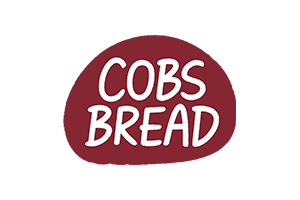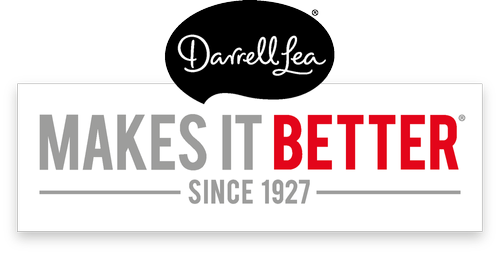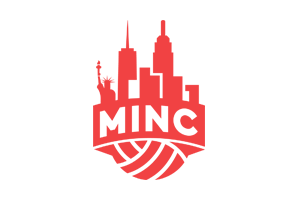Many of us (myself included) that visit New York on holiday dream of coming back to work in the big city one day. So I thought I'd give my personal account of moving to New York from Australia, and what you need to know before you do it yourself.
Hello there, welcome to your very exciting new home in New York City (never “The Big Apple”)! This place is wild but lovely once you understand it and is much friendlier than you might think—but you do need to keep up. Slow-moving people who don’t get out of the way are a New Yorker’s nemesis; so, keep right and move fast.
1. Understanding your way around New York as an Australian
The first thing that will help Australians moving to New York is a quick tour of a map of NYC, so you can get your bearings.
First, there are the five boroughs (in descending average rent order): Manhattan, Brooklyn, Queens, The Bronx, and Staten Island. This is a very sweeping summary of the five boroughs and each of them have their pros and cons, but as an introduction:
- Manhattan is the island in the middle and the one you’ve probably heard most about. It’s hectic, it’s tall, and it holds most of the landmarks you think of when you think about NYC.
- Next, there’s Brooklyn, just over to the East. Brooklyn is now known for its slightly more chilled-out vibe, its culture, and its sprawling size.
- Queens, right above Brooklyn, is the most ethnically diverse county in all of the US, there’s always a lot going on, incredible food to eat, and it’s furiously becoming more popular.
- Above Queens and Manhattan is The Bronx, which has long been thought of as the slightly more rough-and-tumble of the boroughs but is slowly shedding that reputation.
- Finally, right down South, past the Statue of Liberty, you float right into Staten Island. It’s greener and sprawling but with much less going on for someone newly arriving in New York (you can get there on the ferry for free at any time though, which is nice). This is much more suburbian than the city.
Inside of each of the boroughs are neighborhoods.
You may have heard of some of the popular ones like Midtown, NoLiTa (NOrth of Little ITAly), Williamsburg, and FiDi (FInancial District). Each neighborhood has its own look, feel, and budget, but transitioning between them is as easy as crossing one street. You’ll become selective about which neighborhoods you like (Lower East Side is grungy, hip, and fun) and others that you don’t venture to unless you have to (e.g. Midtown is full of tourists and you’re a local now). Prices for apartments vary dramatically depending on where you choose, so be aware of what neighborhood is being advertised when you’re looking and ask lots of questions.
Zooming further in, everything in New York is referenced as a cross-road due to the numbered layout of everything North of Houston Street (pronounced “How-sten”, not “Hew-sten”). You’re not at “712 6th Avenue”; instead you’re at “23rd and 6th”. Street first, avenue second. This has even extended to the neighborhoods that don’t have numbered streets, for example, you could say “Union and Meserole” in Brooklyn to indicate your location.
2. Getting around New York
Now you have your bearings, the best way to become acquainted with your surroundings in New York City is to wander the streets by foot.
When approaching a street, you’ll find the “one-way” signs to know which way to look for traffic (and be sure to make a real effort of this). Look out for bikes flying past (in both directions), don’t step in any puddles (they’ll eat you alive), and don’t breathe too deeply when walking into a Subway station.
Grab yourself a monthly (30-day) Metro pass when you first arrive and have it out as you approach the turnstile, so you can quickly get through. Even if you don’t renew it later, you will definitely want it in your first month, (in coordination with the “Transit” app for your phone) to get around to as many places as possible.
Don’t be put off if you walk out of a station and have nowhere idea where you are, by the way. Nobody does.
3. Groceries and shopping in New York
While walking around, you’ll find that your once familiar delis and sprawling supermarkets have been replaced with ‘bodegas’, which are corner stores open 24/7/365, that hold all of the essentials, and can be found on many street corners.
Generally, they also make sandwiches so look for the meat counter and loudly—but politely—speak your order over the top of it (e.g. “A BLT on a toasted roll, with mayo”), then move to the cashier and pay when it’s ready.
These places are going to become your second home, so be friendly, tip if you get a sandwich (you don’t have to tip when you buy other things), and become familiar with what they hold (for those future snow days).
You’ll also find a few supermarkets around the place but know that they’re not quite going to have the range you might be used to unless you’re going to a monolith like Wholefoods. They're more narrow, more selective, and in many cases will require you to be a bit more forgiving about exactly what you want.
4. Tipping in New York (and America)
Keep in mind that tipping is essential in the U.S. and especially in New York City.
Most importantly you tip waiters (~18% which works out to approximately twice the Tax shown on your check—not ‘bill’), bar staff ($1/beer or wine, more for cocktails), hairdressers (20%), and if you visit a coffee place every morning, some change can’t hurt.
If you’re really, really unhappy with the service, you tip ~15% to show that; but you always tip.
This one is really hard to wrap your head around in the early days, I know, but it's as (or more) important than anything else you'll learn.
5. Sorting out the Practical Things
Now, Australians moving to New York are going to want to go through the process of setting up Social Security, getting a State ID, and grabbing yourself a free NYCID so you can see the sights for free.
With all of this, you can then sign up for a phone plan, and get yourself a bank account which will make you feel more like a local than you realize, and you can finally put away your travel money card (which isn’t the best way to function going forward by the way).
After all of this, you’re going to start feeling more comfortable which is fantastic.
The biggest piece of advice I can give you from here is to talk to people. Everyone here is from somewhere else; everyone has a story. They’ll love to recommend a place to eat, a drink to try, and an event that their friend is hosting next week. Be friendly, be engaging, and have a story of your own that’s quick and fun and explains what brought you here, even if it’s the same as mine: “Funsies!”. As long as you’re not getting in someone’s way while they commute to or from work, they’re going to be happy that you said hello.
At the very least, come find me for a beer.
A few other things you'll need to think about when moving from Australia to New York
In addition to these real essentials:












